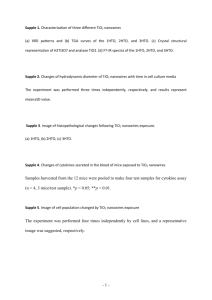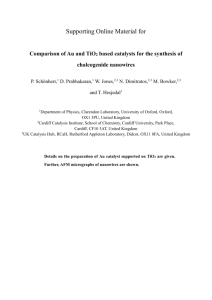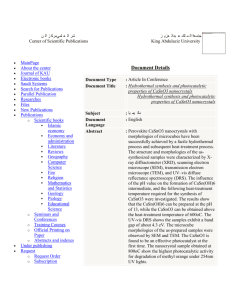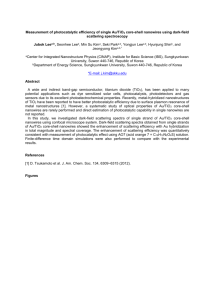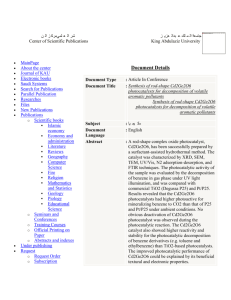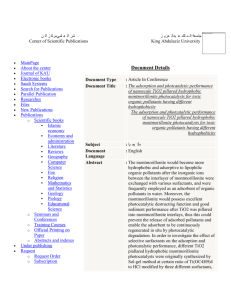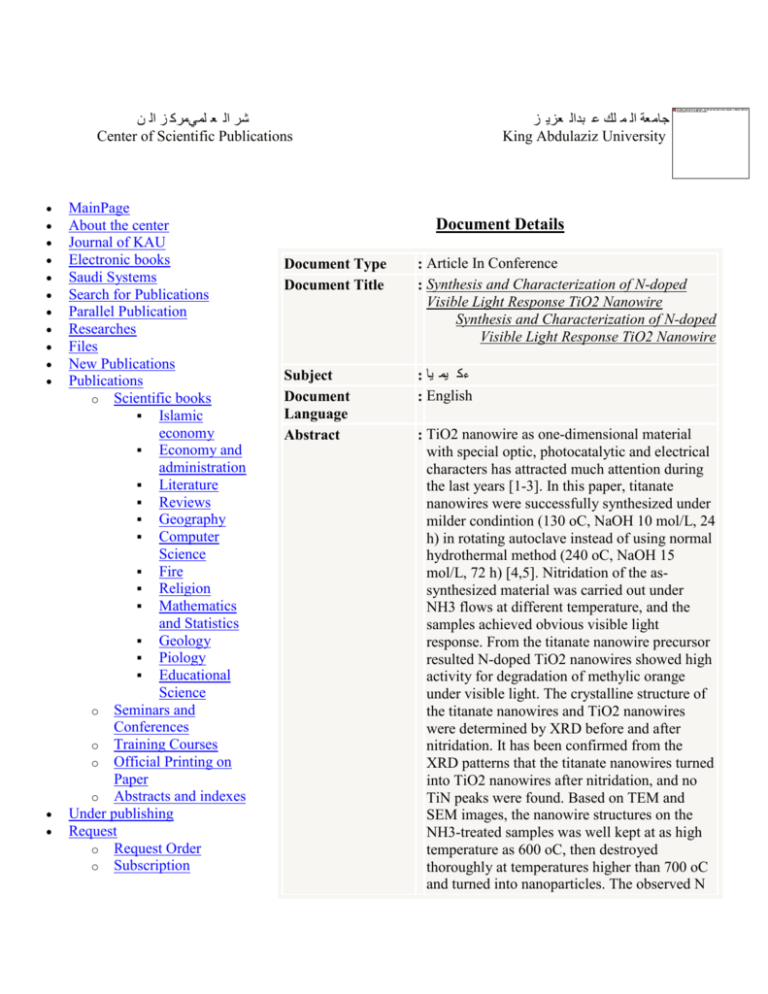
شر ال ع لميمرك ز ال ن
Center of Scientific Publications
MainPage
About the center
Journal of KAU
Electronic books
Saudi Systems
Search for Publications
Parallel Publication
Researches
Files
New Publications
Publications
o Scientific books
Islamic
economy
Economy and
administration
Literature
Reviews
Geography
Computer
Science
Fire
Religion
Mathematics
and Statistics
Geology
Piology
Educational
Science
o Seminars and
Conferences
o Training Courses
o Official Printing on
Paper
o Abstracts and indexes
Under publishing
Request
o Request Order
o Subscription
جامعة ال م لك ع بدال عزي ز
King Abdulaziz University
Document Details
Document Type
Document Title
: Article In Conference
: Synthesis and Characterization of N-doped
Visible Light Response TiO2 Nanowire
Synthesis and Characterization of N-doped
Visible Light Response TiO2 Nanowire
Subject
Document
Language
Abstract
: ءك يم يا
: English
: TiO2 nanowire as one-dimensional material
with special optic, photocatalytic and electrical
characters has attracted much attention during
the last years [1-3]. In this paper, titanate
nanowires were successfully synthesized under
milder condintion (130 oC, NaOH 10 mol/L, 24
h) in rotating autoclave instead of using normal
hydrothermal method (240 oC, NaOH 15
mol/L, 72 h) [4,5]. Nitridation of the assynthesized material was carried out under
NH3 flows at different temperature, and the
samples achieved obvious visible light
response. From the titanate nanowire precursor
resulted N-doped TiO2 nanowires showed high
activity for degradation of methylic orange
under visible light. The crystalline structure of
the titanate nanowires and TiO2 nanowires
were determined by XRD before and after
nitridation. It has been confirmed from the
XRD patterns that the titanate nanowires turned
into TiO2 nanowires after nitridation, and no
TiN peaks were found. Based on TEM and
SEM images, the nanowire structures on the
NH3-treated samples was well kept at as high
temperature as 600 oC, then destroyed
thoroughly at temperatures higher than 700 oC
and turned into nanoparticles. The observed N
Contact Us
Visits Of this Page
0
Conference Name
Duration
Publishing Year
Article Type
Added Date
1s with binding energy of 400 eV by XPS
could be an evidence for N incorporation into
framework of TiO2, which caused the vilible
light response as shown in the UV-Vis spectra.
It was supposed that the incorporation of N
from NH3 to titanate nanotubes caused a H2O
formation, which promoted the rearrangement
of titanate, which converted finally into anatase
TiO2 due to loss of water at high temperatures.
Additionally, the rearrangement of inorganic
framework accelerated N incorporation vice
versa because of the different space matrix
between titanate and TiO2. The photocatalytic
behavior for degradation of methylic orange
was investigated under a 125 W super-highpressure Hg lamps (mail λ =420 nm). The
maximal conversion of 100 %, has been
achieved at room temperature under stirring
(200 ml 20 mg/l methylic orange aqueous
solution and 0.1 g catalyst powder, 2 h), much
higher than 20 % on the N-doped TiO2 (P25)
catalyst. The better photocatalytic activity
should be attributed to the delocalization and
prolonged lifetime of photogenerated charge
carriers on nanowires.
: Tenth International Symposium on
Heterogeneous Catalysis
: From : 22/8/1429 AH - To : 26/8/1429 AH
From : 23/8/2008 AD - To : 27/8/2008 AD
: 1429 AH
2008 AD
: Article
: Sunday, February 15, 2009
Researchers
Researcher Name Researcher Name Researcher
Dr
Email
(Arabic)
(English)
Type
Grade
Aimin Yu
Aimin Yu
Researcher Doctorate
Peng Wu
Peng Wu
Researcher Doctorate
Fuxiang Zhang
Fuxiang Zhang
Researcher Doctorate
Guangjun Wu
Guangjun Wu
Researcher Doctorate
Xiaohong Sun
Yali Yang
Naijia Guan
Xiaohong Sun
Yali Yang
Naijia Guan
Researcher Doctorate
Researcher Doctorate
Researcher Doctorate
Files
File Name
18343.pdf
Type
pdf
Deanship of Information Technology - King Abdulaziz University. All rights reserved
Description

